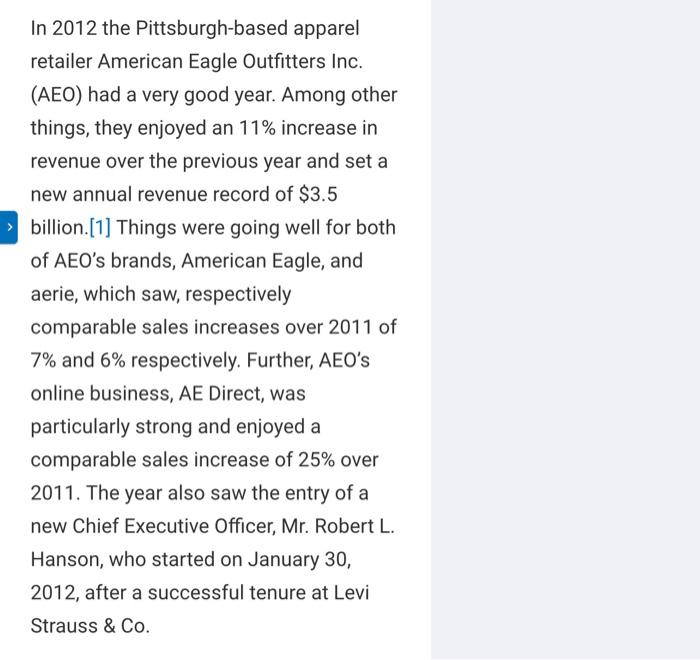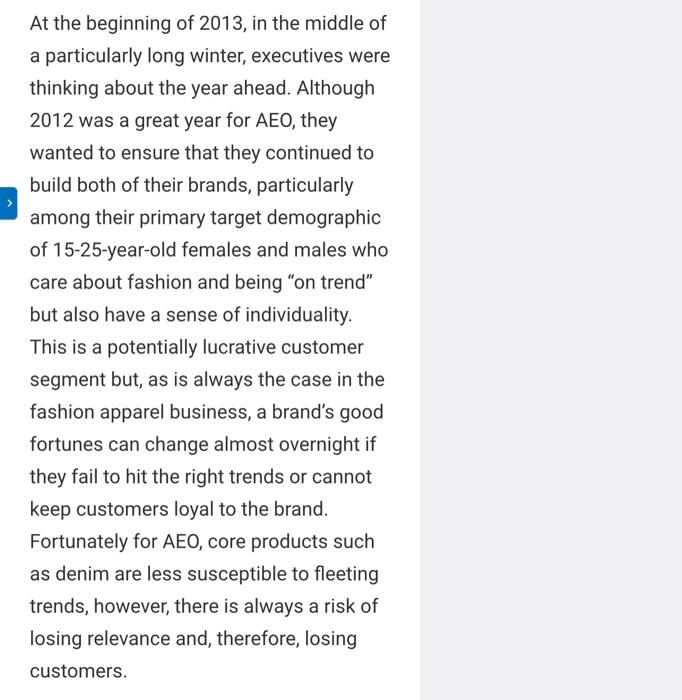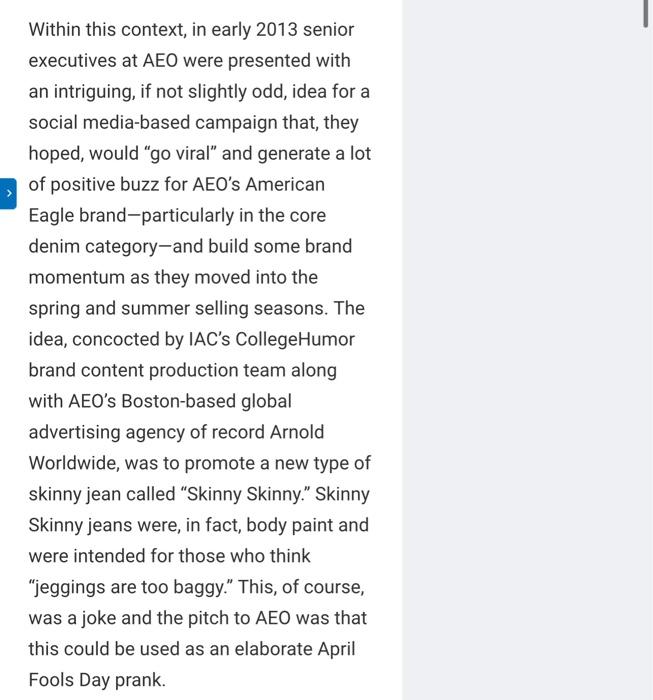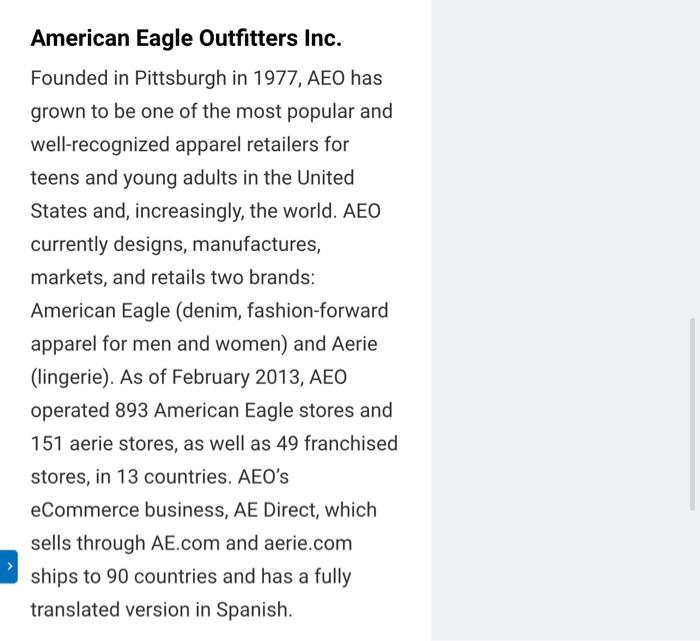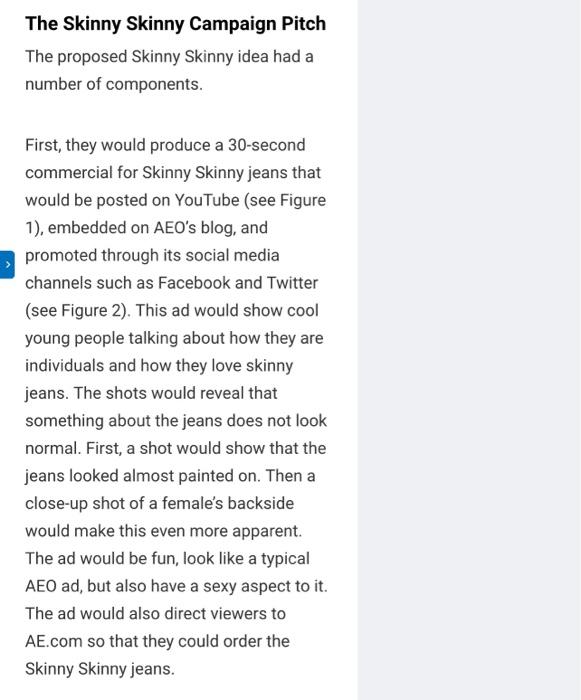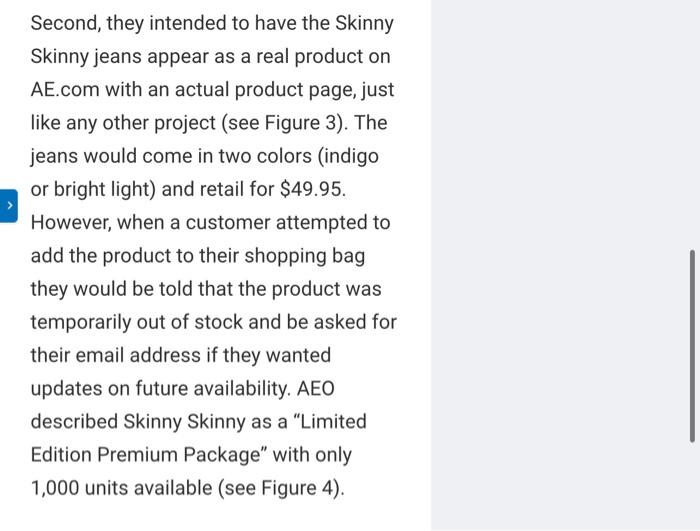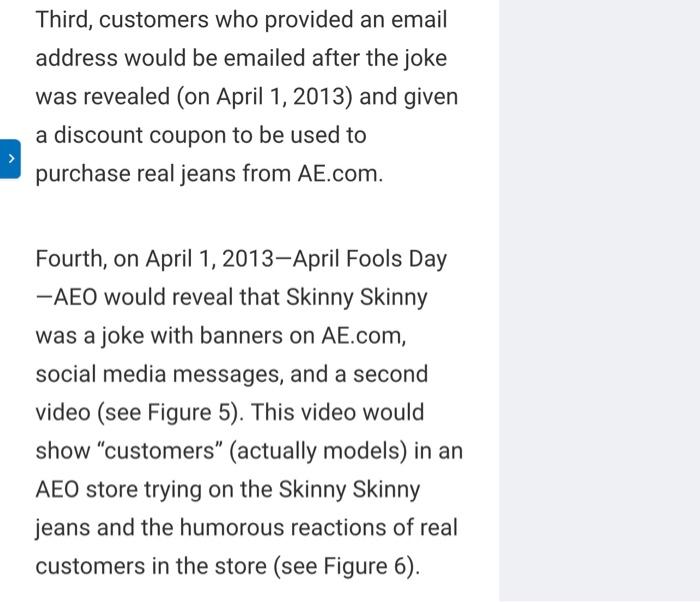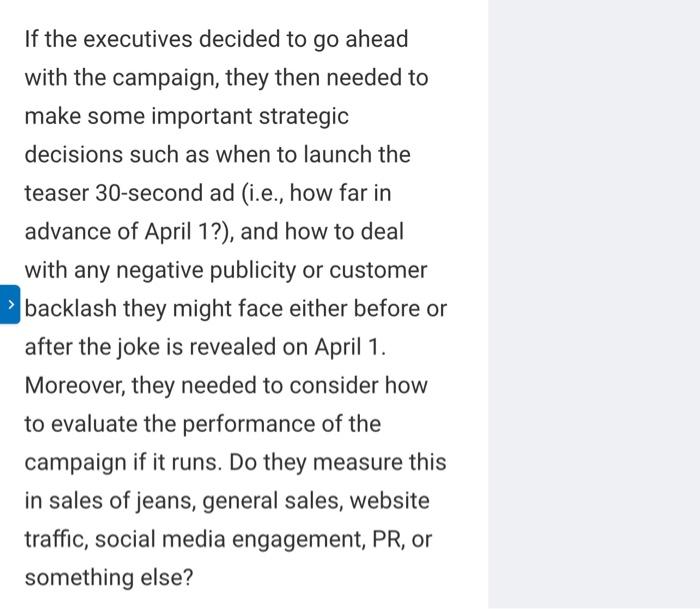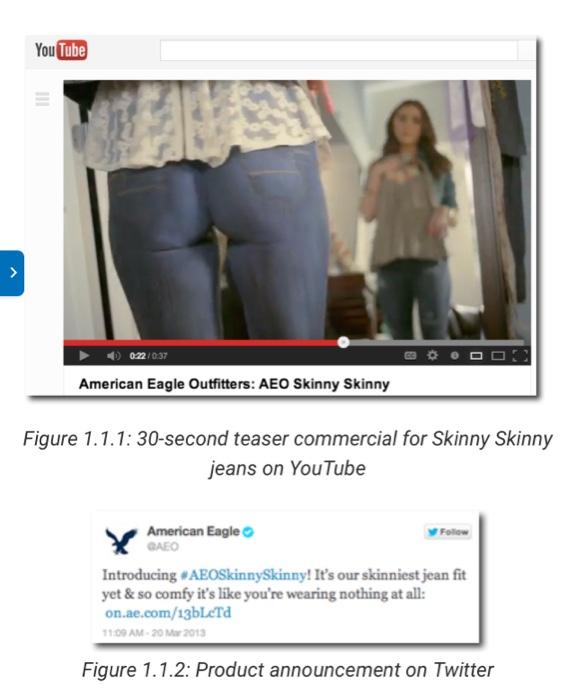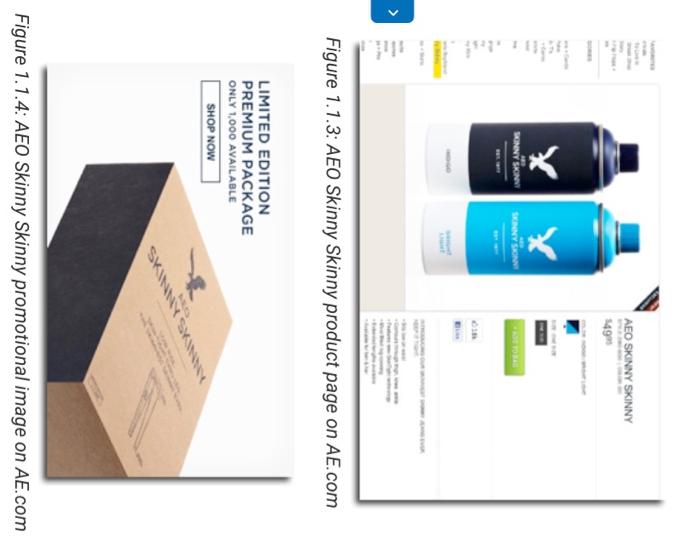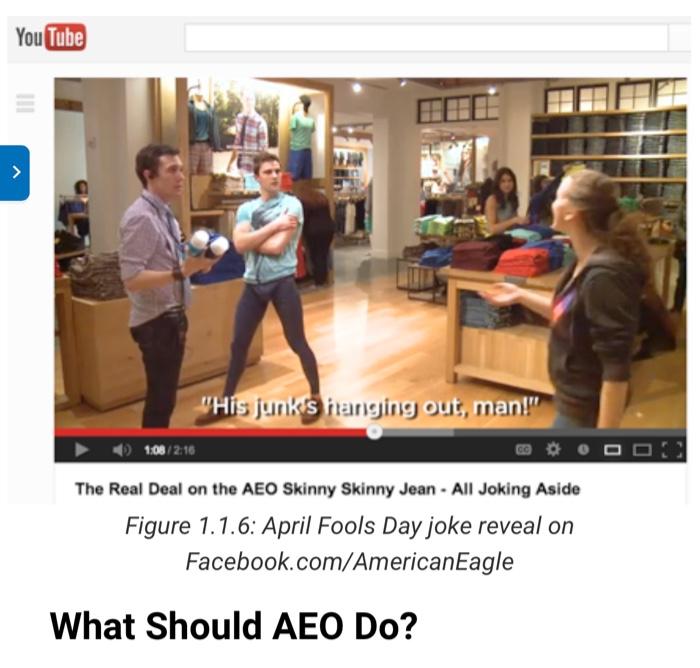- (A) discuss the results against the goals, as well as your critique of the marketing strategy and/or actions in the case
- (B) do your own research and find out a more recent action this business is taking on social media that is related to the challenge/problem in the case study, showcase it, and provide your evaluation and critique
marketing campaign
In 2012 the Pittsburgh-based apparel retailer American Eagle Outfitters Inc. (AEO) had a very good year. Among other things, they enjoyed an 11% increase in revenue over the previous year and set a new annual revenue record of $3.5 billion.[1] Things were going well for both of AEO's brands, American Eagle, and aerie, which saw, respectively comparable sales increases over 2011 of 7% and 6% respectively. Further, AEO's online business, AE Direct, was particularly strong and enjoyed a comparable sales increase of 25% over 2011. The year also saw the entry of a new Chief Executive Officer, Mr. Robert L. Hanson, who started on January 30 , 2012, after a successful tenure at Levi Strauss \& Co. At the beginning of 2013 , in the middle of a particularly long winter, executives were thinking about the year ahead. Although 2012 was a great year for AEO, they wanted to ensure that they continued to build both of their brands, particularly among their primary target demographic of 15-25-year-old females and males who care about fashion and being "on trend" but also have a sense of individuality. This is a potentially lucrative customer segment but, as is always the case in the fashion apparel business, a brand's good fortunes can change almost overnight if they fail to hit the right trends or cannot keep customers loyal to the brand. Fortunately for AEO, core products such as denim are less susceptible to fleeting trends, however, there is always a risk of losing relevance and, therefore, losing customers. Within this context, in early 2013 senior executives at AEO were presented with an intriguing, if not slightly odd, idea for a social media-based campaign that, they hoped, would "go viral" and generate a lot of positive buzz for AEO's American Eagle brand-particularly in the core denim category-and build some brand momentum as they moved into the spring and summer selling seasons. The idea, concocted by IAC's CollegeHumor brand content production team along with AEO's Boston-based global advertising agency of record Arnold Worldwide, was to promote a new type of skinny jean called "Skinny Skinny." Skinny Skinny jeans were, in fact, body paint and were intended for those who think "jeggings are too baggy." This, of course, was a joke and the pitch to AEO was that this could be used as an elaborate April Fools Day prank. American Eagle Outfitters Inc. Founded in Pittsburgh in 1977, AEO has grown to be one of the most popular and well-recognized apparel retailers for teens and young adults in the United States and, increasingly, the world. AEO currently designs, manufactures, markets, and retails two brands: American Eagle (denim, fashion-forward apparel for men and women) and Aerie (lingerie). As of February 2013, AEO operated 893 American Eagle stores and 151 aerie stores, as well as 49 franchised stores, in 13 countries. AEO's eCommerce business, AE Direct, which sells through AE.com and aerie.com ships to 90 countries and has a fully translated version in Spanish. AEO is also very active in social media, particularly on Facebook with separate pages for each of its brands (facebook.com/americaneagle and facebook.com/aerie) that have, respectively, 8.3 million and 1.24 million fans.[2] They also have a strong presence on other platforms such as Twitter, Pinterest, and Instagram, all of which is managed by a social media marketing team who oversees these accounts, responds to posts made by customers, and posts content that they hope their fans will find engaging and that will hopefully, drive fans to AE.com or to stores to check out-and hopefully purchase-American Eagle and Aerie products. The Skinny Skinny Campaign Pitch The proposed Skinny Skinny idea had a number of components. First, they would produce a 30 -second commercial for Skinny Skinny jeans that would be posted on YouTube (see Figure 1), embedded on AEO's blog, and promoted through its social media channels such as Facebook and Twitter (see Figure 2). This ad would show cool young people talking about how they are individuals and how they love skinny jeans. The shots would reveal that something about the jeans does not look normal. First, a shot would show that the jeans looked almost painted on. Then a close-up shot of a female's backside would make this even more apparent. The ad would be fun, look like a typical AEO ad, but also have a sexy aspect to it. The ad would also direct viewers to AE.com so that they could order the Skinny Skinny jeans. Second, they intended to have the Skinny Skinny jeans appear as a real product on AE.com with an actual product page, just like any other project (see Figure 3). The jeans would come in two colors (indigo or bright light) and retail for $49.95. However, when a customer attempted to add the product to their shopping bag they would be told that the product was temporarily out of stock and be asked for their email address if they wanted updates on future availability. AEO described Skinny Skinny as a "Limited Edition Premium Package" with only 1,000 units available (see Figure 4). Third, customers who provided an email address would be emailed after the joke was revealed (on April 1, 2013) and given a discount coupon to be used to purchase real jeans from AE.com. Fourth, on April 1, 2013-April Fools Day -AEO would reveal that Skinny Skinny was a joke with banners on AE.com, social media messages, and a second video (see Figure 5). This video would show "customers" (actually models) in an AEO store trying on the Skinny Skinny jeans and the humorous reactions of real customers in the store (see Figure 6). After this idea was pitched to the AEO executives, including Robert Hanson and his team of senior marketing executives (including Chief Marketing Officer Michael Leedy and Vice President, Brand Marketing Bob Holobinko), AEO's executives had to decide whether or not to go ahead with this campaign. On the one hand, AEO never wants to become safe or expected[3] and some of the executives take the position that without pushing things further AEO cannot cut through the industry with its message.[4] Therefore this could be a way to show that AEO is edgy and, if the campaign goes viral, it could generate a lot of buzz. On the other hand, some of AEO's competitors, particularly Abercrombie and Fitch, have found themselves in trouble with overly provocative or sexy marketing over the years. If the executives decided to go ahead with the campaign, they then needed to make some important strategic decisions such as when to launch the teaser 30-second ad (i.e., how far in advance of April 1?), and how to deal with any negative publicity or customer backlash they might face either before or after the joke is revealed on April 1. Moreover, they needed to consider how to evaluate the performance of the campaign if it runs. Do they measure this in sales of jeans, general sales, website traffic, social media engagement, PR, or something else? Figure 1.1.1: 30-second teaser commercial for Skinny Skinny jeans on YouTube American Eagle 0 Introducing "AEOSkinnySkinny! It's our skinniest jean fit yet \& so comfy it's like you're wearing nothing at all: on.ae.com/13bLeTd Figure 1.1.2: Product announcement on Twitter Figure 1.1.3: AEO Skinny Skinny product page on AE.com Figure 1.1.4: AEO Skinny Skinny promotional image on AE.com You Tube The Real Deal on the AEO Skinny Skinny Jean - All Joking Aside Figure 1. 1.6: April Fools Day joke reveal on Facebook.com/AmericanEagle What Should AEO Do
